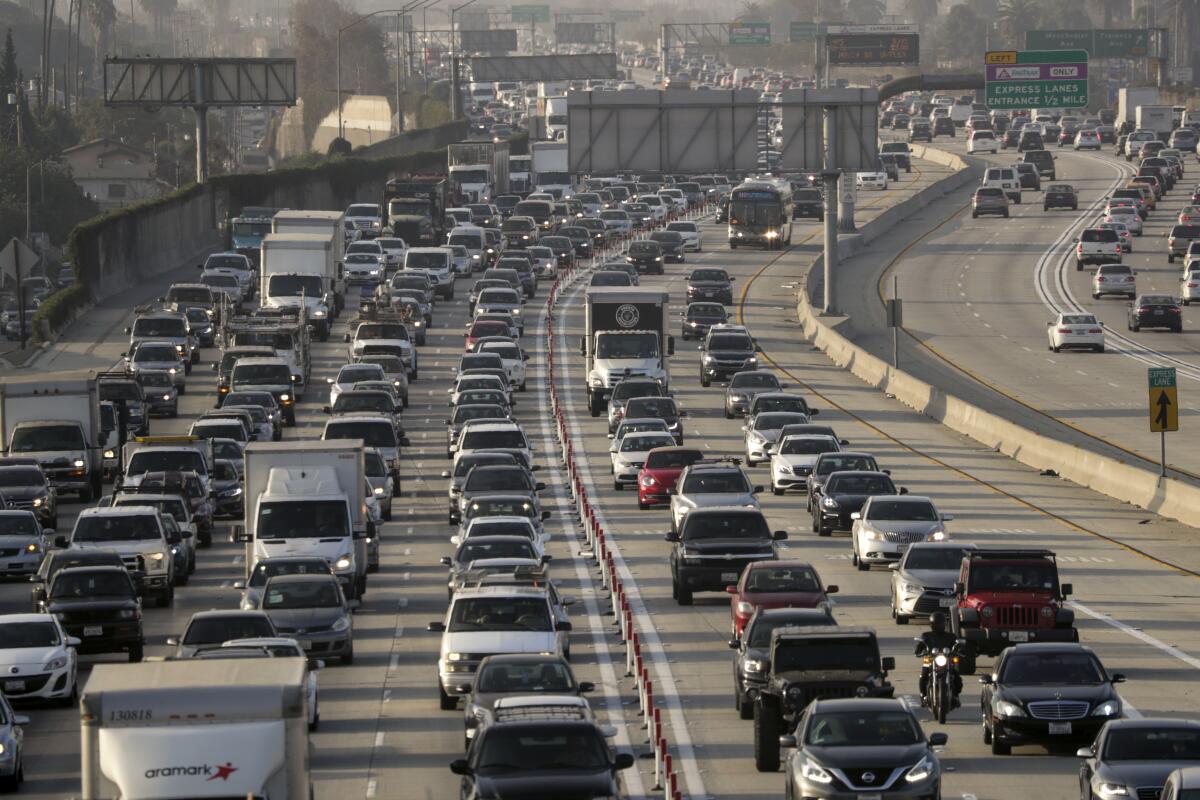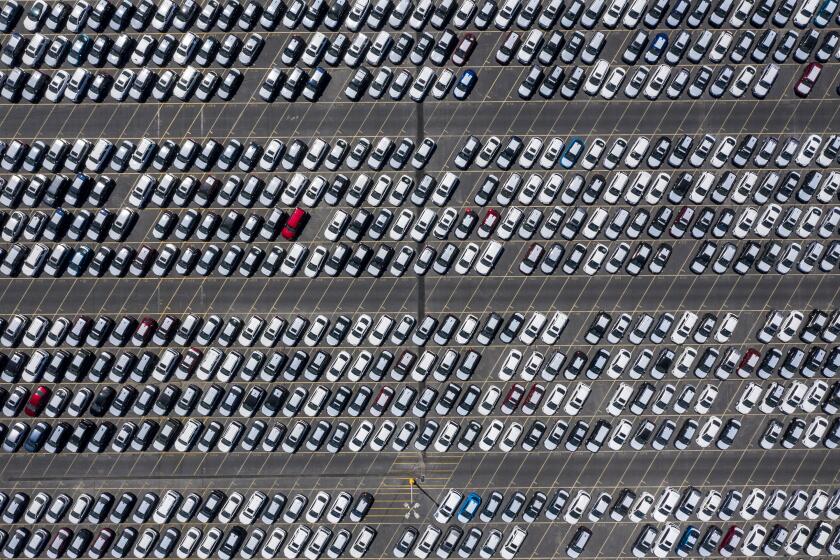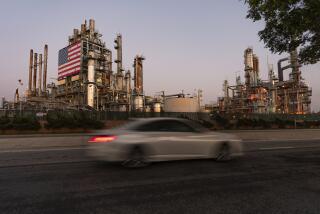Americans will hit the road for Memorial Day weekend with highest fuel prices since 2014

- Share via
Americans will hit the road this holiday weekend with the highest gasoline prices in seven years and the White House promising to monitor fuel costs.
The national average price at the pump hit $3.045 per gallon this month, the highest since 2014, and was just one-tenth of a cent below that Friday, according to data from auto club AAA.
“The President knows that gas prices are a pain point for Americans,” White House Press Secretary Jen Psaki said in a statement Friday. “President Biden is opposed to any proposals to raise the gas tax. And it’s why we will continue to monitor prices, and are glad that Americans can get on the road again.”
Gasoline demand is roaring back close to levels seen before the pandemic as the world’s largest economy opens up and avid drivers take to the roads after a year of lockdowns and restrictions.
A unique set of circumstances brought on by the pandemic has roiled the used car market, leading to an inventory shortage that has sent prices soaring.
Summer gasoline demand may average out to normal, with some weeks above record levels at 10 million barrels per day, said Patrick De Haan, head of petroleum analysis at GasBuddy. Any disruption to refinery supplies in the form of a hurricane or unexpected outage could send prices surging.
“The worry is that any hiccup could be made worse by the truck driver shortage, leading to slow restorations and further price implications,” De Haan said in an email.
The weekend before the Memorial Day holiday typically marks the start of the U.S. driving season.
National demand for gasoline, as measured by the four-week average for supplied fuel, has jumped above 9 million barrels a day for the first time since March of last year, according to the U.S. Energy Information Administration.
As travelers begin to plan vacations as COVID-19 cases wane, road trips to outdoor destinations are emerging as a popular choice.
That’s at a time when the country’s gasoline supply is straining to recover from the weeklong shutdown this month of the Colonial Pipeline. The nation’s largest fuel pipeline, which takes gasoline and diesel from the Gulf Coast to the East Coast, was temporarily hobbled by a cyberattack, touching off regional gasoline shortages.
Restoring regional supplies hasn’t been as easy as restarting the flow of fuels, in part because of a severe shortage of trucks and drivers needed to ferry gas from hubs to retailers. And refineries are operating at some of the lowest seasonal rates in almost a decade, as a result of the drop in demand during the pandemic.
In her statement, Psaki said that prices are in line with where they’ve been in recent years in real terms, or when discounted for inflation.
“As Americans are hitting the road, they are paying less in real terms for gas than they have on average over the last 15 years,” she said. “They’re paying about the same as they did in May 2018 and May 2019.”
More to Read
Inside the business of entertainment
The Wide Shot brings you news, analysis and insights on everything from streaming wars to production — and what it all means for the future.
You may occasionally receive promotional content from the Los Angeles Times.












